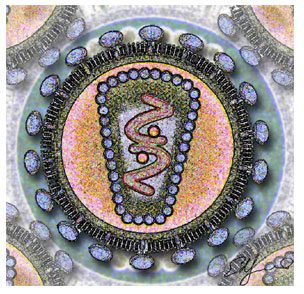What is AIDS?
-
AIDS stands for acquired immunodeficiency syndrome, and it is caused by the human immunodeficiency virus (HIV). AIDS symptoms may not show for years after a person is infected with HIV, but once it does, the immune system of the body is destroyed. This means that even a mild cold or flu can kill someone with AIDS because the body cannot fight back.
How HIV is Spread
-
HIV cannot be caught like a cold. The virus is transmitted through direct contact with bodily fluids, such as blood, semen, vaginal fluid and breast milk. Tears and saliva cannot transmit HIV since the virus is at too low of a concentration. Common sources of HIV spread include sexual contact with those infected and sharing needles. A baby can acquire the virus from an infected mother during birth or from breast-feeding.
The HIV Virus Outside of the Body
-
Viruses are delicate and without a host, they will quickly die. HIV can only last for a few hours at the most outside of a host. Laboratory studies by the U.S. Centers for Disease Control and Prevention have found that even super-concentrated amounts of HIV will die within hours on a surface.

